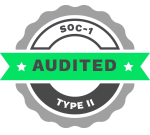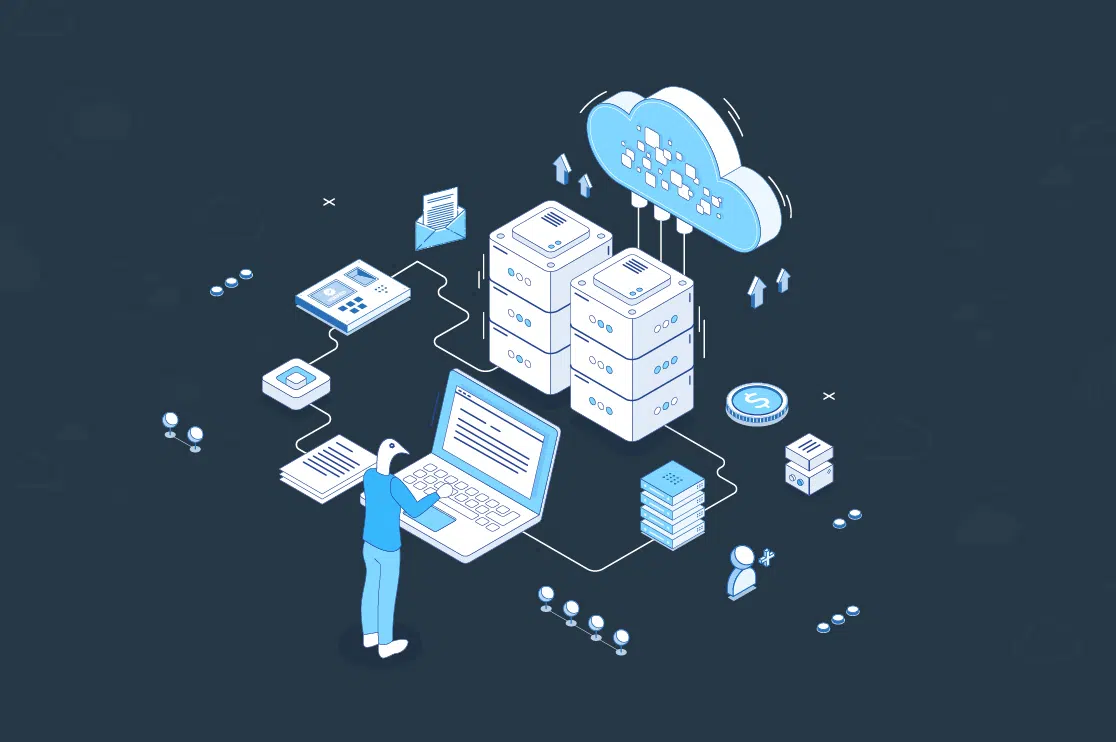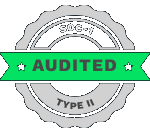This blog has been updated on – December 29, 2023
Want to minimize recalls that can cost millions? Supply chain risk management is an excellent place to start if you’re into logistics and business-to-customer (B2C) operations.
The growing disruptions in supply chains impact global retailers, manufacturers, and suppliers using traditional product tracking and management systems.
Unsurprisingly, most need to become more familiar with strategic supply chain management and risk mitigation plans.
They’ve no idea about the first steps to take or what it involves.
In this article, we’ll clear all that up for you. Whether your industry is pharmaceuticals, electronics, or consumer goods, you’ll find it helpful.
Table of Contents:
What is Supply Chain Risk Management or SCRM?
You might already know what supply chain management (SCM) is: managing the flow of goods and services, mainly via streamlining supply-side activities.
It includes all the processes that convert your raw materials to your end products, including but not limited to procurement, sourcing, and logistics.
Supply chain management tools and eCommerce solutions help ensure product delivery from your suppliers to your customers. However, there is no all-in-one approach to this.
Every enterprise will face different challenges in risk analysis management and need solutions tailored to each.
Supply Chain Risk Management Definition
SCRM involves advanced business process automation for supply, assessment, logistics analytics, and risk mitigation techniques to streamline operations.
Considering the COVID-19 impact on the eCommerce sector, most supply chain experts deploy integrated tools to identify and predict risks in ongoing and upcoming operations.
Embrace Data Science, Visualization, and Analytics for Smart Risk Reduction and Predictive Maintenance.
Types of Supply Chain Risks to Mitigate for Smooth Operations
Companies can avoid two categories of supply chain risks when collaborating with inventory managers and logistics partners or suppliers.
External and Internal Supply Chain Risks
Such risks in the global supply chain arise from outside your organization; hence, they’re difficult to predict.
Fortunately, advanced predictive analytics for risk management with a team of certified data analysts enables enterprises to identify them immediately.
Examples of external supply chain risks:
-
Environmental risks, such as natural disasters or incidents, such as earthquakes, COVID-like pandemics, and hurricanes,
-
Socio-economic, governmental, and political factors such as terrorism threats, wars, and other disturbances or developments happening worldwide,
-
Business risks, including last-minute changes from suppliers or manufacturing units, cause interruptions in the flow of products, including finished goods, raw materials, and logistics.
-
Demand and supply risks due to inaccurate insights or forecasts relating to market demands, buying patterns, trends, and behavioral changes in target customers.
To counter external risks, data engineers at BluEnt recommend eCommerce analytics for business success with supply chain risk mitigation benefits.
When it comes to internal supply chain risks, companies can relate them to the underlying technicalities in integrated software or tools. They can be detected and managed with intelligent data integration, monitoring, assessment, and management programs using intelligent automation and BI.
Examples of internal supply chain risks are:
-
Business risks due to failures in meeting customers’ needs,
-
No planning and plans to mitigate contingency and unexpected events,
-
Operational risks due to disruptions of internal operations, changes in key personnel and business processes,
-
Security risks due to lack of proper cybersecurity controls and policies.
Recommended Reading:
Known and Unknown Supply Chain Risks
Another category of risks to mitigate for supply chain resilience outlines known and unknown factors.
As the terms suggest, known risks can be identified, measured, and managed. On the other hand, unknown risks are very difficult or impossible to predict.
An example of a known risk would be a supplier bankruptcy, whose likelihood could be predicted based on the financial history of the supplier. Here, the role of predictive analytics in finance comes in.
Hence, the impact on your business could be further estimated through consideration of the disrupted markets and products.
On the other hand, an example of an unknown risk would be a pandemic we have all become intimately familiar with. Even the most risk-conscious managers were not prepared for COVID-19.
Recommended Reading:
Working to increase the speed of your response to unknown risks when they occur is crucial to supply chain risk management.
The BluEnt approach for predictive analytics and data engineering empowers supply chains to:
-
Catalog a full scope of risks you might face,
-
Create a risk management framework,
-
Determine the metrics that are appropriate for managing your risks,
-
Monitor and track these metrics with data visualization services and
-
Identify gray areas where supply chain risks are difficult to define or understand.
Predictive Analytics in the supply chain can reduce inventory costs by 22%. Get data analytics solutions for low inventory costs and seamless risk management.
Steps for Supply Chain Risk Mitigation
These will apply to known risks from the categories defined in the previous section.
Step 1: Identify Risks
Identifying relevant risks should be comprehensive and focus on the supplier and the supplier’s service or production location.
Assess the nodes of your supply chain: plants, suppliers, transport routes, and warehouses.
Recommended Reading:
Enter risks on a register and track them. Users must record the parts of the supply chain where no data is available.
It is essential to achieve suitable transparency from the direct supplier regarding their critical supporting suppliers.
Step 2. Prioritize and Analyze Risks
-
Understand individual risk factors such as challenges in localization for supply chain strategy.
-
Be aware of aggregations regarding single points of failure in the supply chain.
-
Risks in your register should be scored on three dimensions: the probability of risk, the potential impact on the organization, and the organization’s preparedness.
-
Create and utilize a consistent scoring methodology.
Step 3. Monitor Risks
A successful supply chain risk management strategy will incorporate likelihood, preparedness, and impact. It will also be tailored to your organization’s needs.
An early warning system to track risks is critical, as it will help limit or mitigate their impact. Digital risk monitoring tools, big data, and business intelligence make this possible for even highly complex chains.
Step 4. Mitigate Risks
Your final step will be to set up a robust mechanism with eCommerce automation to review supply chain risks and determine actions for mitigation. That may include:
-
Additions to inventory,
-
Improved supplier business continuity plans,
-
Identification of qualified alternative suppliers, and
-
Periodic meetings to review top risks.
Recommended Reading:
Ending Notes: Upscale your Supply Chain Efficiency with BluEnt’s Expertise in Data Science, Advanced Analytics, and Risk Management
We hope this article has given an excellent overview of global supply chain risk management. It is not just about risk management data analytics or risk management tools but also a fundamental shift in company culture and mindset.
Supply chains can decrease their chances of losing money and reputation by using these approaches. And if you need data specialists and risk management experts to do it for you, we at BluEnt are there to guide you to
We provide end-to-end risk management solutions and data analytics services to gaming, healthcare, research, human resource, logistics, and supply chain industries.
We’re partnering with large-scale enterprises, SMEs, and growing startups aspiring to embrace next-gen developments in predictive AI, augmented reality, and VR. Our expertise involves data science, data visualization, data engineering, robotic process automation (RPA), business process automation, and other emerging technologies.
View how we’ve helped other businesses like yours in our supply chain management and data analytics case studies.
Contact BluEnt to achieve supply chain resilience at zero risks, delays, and uncertainties.
Maximum Value. Achieved.
Frequently Asked Questions
Why Do Businesses Struggle to Setup Supply Chain Risk Management Plan?
There are many reasons why organizations might have a problematic time mitigating risks:
-
The severity and probability of many risks are stern to determine
-
Lack of supply-base transparency
-
Proprietary data restrictions – this limits visibility at the purchaser level
What are the stages of supply chain analytics?
Companies with excellent supply chain management involve these strategies in the process:
-
Sales, inventory, and operational plans: Supplier or supply chain predictive analytics for risk prevention and goods projection.
-
Sourcing & Costs: Cost modeling, spend pooling, balancing demand and supply expenses, contract compliance analysis.
-
Production & Quality: Scheduling energy-driven manufacturing and quality control and checks for reducing recalls.
-
Warehousing and Storage: Resource management, workload assessment, auto stock movement, stock relocation efficiency, etc.
-
Transportation: Real-time shipment tracking, delivery schedule, cost remodeling, intelligent routing, and allocation.
-
Point-on-sale & Customer Responses: Advanced analytics to detect out-of-stock products and prevention, shelf optimization for space. Customer recommendations, ratings, purchase history, and fraud detection.













 How Financial and Accounting Services by BluEnt Drive Business Growth in the Digital Era?
How Financial and Accounting Services by BluEnt Drive Business Growth in the Digital Era?  Secure Gift Cards: Top Tips and Strategies’ to Safeguard Personal Information
Secure Gift Cards: Top Tips and Strategies’ to Safeguard Personal Information  Cloud Data Engineering: Infrastructure and the Road Ahead
Cloud Data Engineering: Infrastructure and the Road Ahead  Real Time Analytics: Facets, Insights, and Use Cases
Real Time Analytics: Facets, Insights, and Use Cases 
